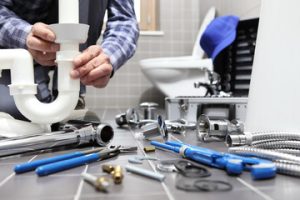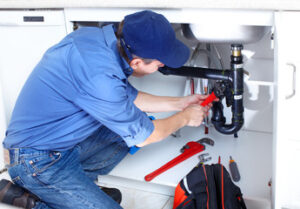Plumbing Express, Inc. is the network of pipes, fixtures, and other equipment that supply water for use and remove waste. It follows strict building codes and regulations to ensure safety and functionality.

Pipeline business stages act as a checklist, moving each lead to the next stage once they’ve completed an activity like making contact or setting up a meeting. This allows sales teams to track the progress of each deal.
Pipes are the medium through which water, waste, steam and other fluids travel in a home’s plumbing system. They are made of different materials and serve a variety of purposes. Some pipes are visible, such as those that run through a home’s walls and floors, while others are hidden within the wall cavities and in the attic space. Most residential pipes are made of PVC, CPVC or copper. Each type of pipe has its own advantages and disadvantages.
The pipes in a home’s plumbing system carry water, waste and sewage from fixtures such as toilets, sinks, baths and appliances like washing machines. They are also used to connect water mains with the house’s plumbing system. Whether the pipes are made of metal, plastic or some other material, they must be durable enough to handle pressure and resist corrosion.
Besides being strong, pipes must be flexible enough to withstand the twisting forces of water pressure. They must also be lightweight and have good insulation properties to reduce the risk of leaks or temperature fluctuations. Pipes are often marked with their size, material composition and other important information. Depending on the project, the right type of pipe must be selected to ensure safety and efficiency.
Pipe sizes are usually identified by their inner diameter and wall thickness. For example, a half-inch iron pipe actually has an inner diameter of about three-quarters of an inch. This is because older pipes used a different sizing system, which designated pipe by its outer diameter rather than its inside diameter. The newer pipe sizing system uses schedules, with designations like Standard Wall (Std), Extra Strong (XS) and Double Extra Strong (XXS).
Other metals and alloys, such as copper, lead, nickel and various stainless steels are also used for piping systems, typically because of their corrosion resistance or ability to endure high temperatures. For example, copper tubing for residential plumbing has a smooth texture and can be colored red for hot water lines, blue for cold and white for both for a clean look. It’s also often stamped with its design specifications and ratings, which helps installers identify the type of pipe they are working with.
Fixtures
A fixture is any item that attaches to a plumbing system’s pipes. Fixtures are used for various purposes such as water distribution and waste removal in homes, schools, and businesses. Some of the most common fixtures include sink faucets, bathtubs, showerheads, toilets, and kitchen taps. They are important in maintaining cleanliness and hygiene in homes and workplaces. These fixtures are also used to accessorize and beautify a home’s interior design.
Choosing the right plumbing fixtures is essential for ensuring functional integration and aesthetic harmony. They should be durable and easy to maintain. For example, you can opt for stainless steel or chrome-plated brass fixtures that are resistant to corrosion and tarnishing. This will help to prevent the need for frequent repairs and replacements. Additionally, you should ensure that your new fixtures are compatible with existing ones in terms of size, shape, and installation. This will help to avoid any issues with water flow and reduce the cost of the upgrade project.
There are many different types of plumbing fixtures available on the market, from simple and minimalist designs to ornate, decorative options. You can choose the ones that best match your home’s design style and preferences. For instance, if you have a traditional or vintage-inspired bathroom, you may want to opt for faucets and showerheads with intricate detailing and a claw foot tub. Alternatively, you might want to go for sleek, contemporary fixtures that blend in with the overall look of your home’s décor.
Regardless of your preferred design, it is important to consider the quality and functionality of the plumbing fixtures you choose. By doing so, you can be sure that they will provide years of reliable use and enhance the beauty of your home’s interiors. In addition to this, you should always work with a qualified professional when installing or replacing your fixtures. This will ensure that your fixtures are installed correctly and that they meet all state and local codes. Additionally, a licensed professional will be able to identify and correct any potential problems with your plumbing system before they become serious.
Drainage
Drainage is the primary system that moves waste and water away from buildings, funneling it into receptacles or directly into sewer lines. This system protects people and property by preventing water accumulation that can cause floods, soil erosion and structural damage. It is accomplished with a network of pipes, channels and other man-made structures that collect and transport excess water to appropriate discharge areas.
Plumbing pipes are typically made from copper, steel or plastic tubing. In older homes, lead pipes may also be present. Knowing the pipe types present can help home owners understand how their plumbing system works and how it might need maintenance. In addition, understanding the different piping materials can allow for over-the-phone estimates from service technicians when it comes to drain cleaning and other plumbing repair services.
Sanitary drainage systems, also called house drains, are sized based on the number of “fixture units.” One fixture unit equals a washbasin, toilet or bathtub. The sizing ensures that the drains can handle the surge flow rate of wastewater and prevents backflow. Each sanitary drain is also fitted with a drain trap that has a specific depth of water seal according to regulations to prevent sewage-contaminated air from entering other apartments in the building.
Each sanitary drain connects to the house drain via a sloping grade that ensures scouring action occurs during drain emptying. This prevents clogging and helps to keep the house drain clear of debris. It is important for homeowners to know that the slope of the house drain can affect the quality of their water supply.
When a homeowner notices that multiple drains are backed up, slow-moving or emitting foul odors, it is likely due to a problem with the sewer line. If just one drain is affected, it might be a localized plumbing issue that can often be addressed with a drain snake.
Homeowners can help protect their plumbing system and maintain proper draining by scheduling annual plumbing inspections. This will help to identify issues before they become major problems. It is also a good idea to have professional drain cleaning services performed every two years. This can prevent clogs, drain backups and other unpleasant household plumbing issues.
Venting
A plumbing system’s drainage and vent functions work together to remove wastewater and sewer gases from your home. Drainage pipes carry waste out of your toilets, showers, and sinks to the city sewer or a septic tank, while the vent system balances air pressure in the pipes so water and waste move through easily. If either of these systems is out of balance, it could cause a number of issues that require professional repair.
The main function of plumbing vents is to allow unpleasant odors and sewer gasses to escape the drainage system rather than entering your living space. They also let fresh air into the drainage pipes, which helps prevent clogs. Plumbing vents are regulated by your local building code to ensure they’re the right size and distance from windows. They typically connect to your home’s drainage pipes through the roof and exit into open air.
Every drain in your home needs a vent to ensure it has a water seal to block unwanted sewer gases from entering your living spaces. Without a vent, these gases can siphon back up into your fixtures like a soda bottle that has been turned upside down—only instead of the water glugging out, it siphones the sewer gas into the fixture. With a properly installed vent, the introduction of air into the drainage system breaks the siphon and prevents wastewater from backing up in your home.
Venting options include a common vent pipe, an individual vent for a single fixture, or an air admittance valve (AAV). The AAV is used between two fixtures on opposite sides of the house and allows both to share one vent pipe. An individual vent is used when a fixture, such as your bathtub’s drain, is located far from the main vent stack. An AAV can also be installed in your tub’s water line to protect the trap seal and stop sewer gases from entering the bath.
Your vent system is important to the smooth operation of your plumbing and should be regularly inspected by a licensed plumber to make sure it’s clear of obstructions, free of debris, and adequately sized for your home’s drainage pipes. In addition to annual inspections, it’s a good idea to clean your vents at least twice a year.
